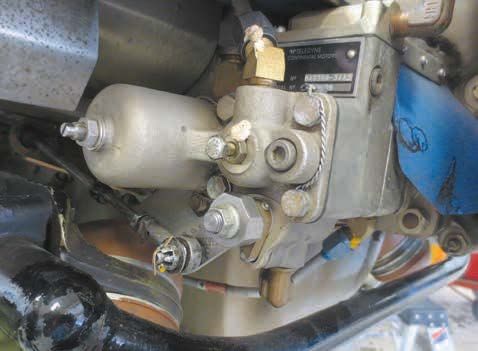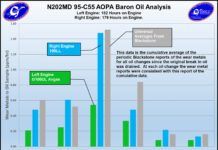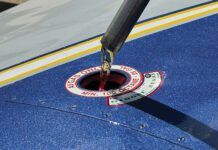Some years ago I was taking an IPC and FR in a Piper Aztec. A few minutes into the climb, I shut off the aux pumps, one at a time. A few seconds later, one engine quit. I turned the pumps back on and the engine restarted. After leveling off and setting low cruise power, I tried turning off the pumps again, and found that the left engine was the problem. It would run fine with the aux pump on; not at all with it off.
I assumed that the engine-driven fuel pump had failed. I called ATC and said I was returning. On landing rollout, the left engine quit and wouldn’t restart. I foolishly taxied to the FBO on the right engine, a fire truck following uselessly. As I shut down the right engine, the chief mechanic appeared and told me in a loud voice that there was fuel dripping from the left nacelle.
The problem wasn’t the engine-driven fuel pump; it was a cracked fuel line. It was then that I started learning that aircraft fuel pumps, whether engine driven or electrically powered, rarely fail.
As I researched this article, the reliability of aircraft fuel pumps, as compared to other components on our airplanes, was pointed out to me by every mechanic and overhaul technician I spoke with. I guess it shouldn’t be a surprise—pumps for moving liquids have been around for centuries, so one would expect the design and manufacture of such relatively simple devices to have been sorted out.
While most engine-driven fuel pumps are rotary pumps, just like vacuum pumps, the vanes are metal, rather than graphite, so there’s no expectation that they will come to pieces every 800 hours or so. Diaphragm fuel pumps are equally reliable.
While doing my homework, I also found that it’s much more common for a pilot to have an engine stoppage because he or she does not know the aircraft’s fuel system or misuses the boost/aux pump than because a pump fails. Where turning on the electrically-driven fuel pump as a backup for the engine-driven pump is part of the pre-landing checklist on a Piper Arrow, doing so on a Bonanza will probably flood the engine.
What Pump?
Whether you have to even be concerned about fuel pumps depends on the type of airplane you fly. The whole idea behind a fuel pump is to either get fuel to the engine or transfer fuel among tanks in the airplane. If you can’t transfer fuel in your airplane and it has a high wing and a carbureted engine, there’s no fuel pump—gravity gets the fuel to the engine. The fixed-gear Cessna Cardinal is an exception due to its wing/engine geometry and FAA certification requirements.
If you are flying a low-wing airplane or one with a fuel-injected engine, it will have an engine-driven fuel pump and a boost or aux pump. (I’ll use aux and boost interchangeably.) If the engine is carbureted, the aux pump is a backup should the engine-driven pump fail. If the engine is fuel injected, the aux pump is a backup and is also used to prime the engine for starting.
Per its name, an engine-driven fuel pump is attached to the engine and driven off the accessory case. A boost pump is electrically driven.
Depending on the airplane, it may not be possible to start the engine if the aux pump has failed. Some may start without priming, and most twin Cessnas can use the aux pump for the other engine with the fuel selector in crossfeed to prime the engine with the dead aux pump. Nevertheless, I strongly recommend against flying an airplane with an inoperative aux pump—plus, it’s in violation of the FARs.
Longevity
We were told by users, maintenance shops and overhaul facilities that engine-driven and aux pumps routinely last to engine TBO. The manufacturers call for overhaul at engine TBO or at a calendar-year interval, most commonly 10 to 12 years.
The enemy of all fuel pumps is debris. According to Mark Mercer, chief inspector at Quality Aircraft Accessories, a major overhauler of fuel pumps, the failures he most often sees are due to debris that got into the fuel system when it was opened up to inspect or replace a component. He advised that any time the fuel system is opened up that it be flushed out before the aircraft is returned to service. That recommendation was echoed by Scott Utz, president of Arapahoe Aero at Denver’s Centennial Airport. He also said that the fuel screen should be inspected and cleaned at every annual. Debris that has been caught by the screen can eventually fragment and work its way through and into a pump.
In addition to the good news that fuel pumps have a good record for longevity, they also don’t require preventive maintenance. What they do require is looking at them on a regular basis to check for leaks.
If a seal or gasket wears out, it will probably lead to a leak—something not to be trifled with. Pull the pump and overhaul or replace it.
Many electric boost pumps are mounted somewhere between the fuel tanks and firewall. For instance, on a Beech Baron the boost pumps are in the wings; in a Cessna 210, the boost pump is just aft of the firewall, under the floorboards.
Boost pumps are made up of an electric motor, a pump and a space in between. If a seal or gasket wears out, the fuel is likely to leak into the space built to separate the fuel containing part from the electric motor. That space has a drain—and it may have a tube that carries through the aircraft’s skin so that it can drain the fuel safely overboard. Know where the boost pump(s) is on your airplane and where you would expect to see fuel if there is a leak.
Scott Utz told us that there are two symptoms of a boost pump starting to wear out that a pilot can detect. When priming the engine, a pilot usually looks at the fuel flow or pressure gauge and holds the prime switch until the pressure/fuel flow reaches a certain level. If the pump won’t generate that pressure, or it starts taking a longer time to do so, it’s a warning that the pump is getting tired. Similarly, if the sound of the pump changes, especially if there’s an unusual screech, a bearing may be going.
More and more owners are replacing or overhauling components on condition rather than at some set time in service. Mike Busch, maintenance technician and proprietor of Savvy Aircraft Maintenance Management, is an outspoken proponent of on condition maintenance. In talking with him for this article, he was quick to caution that if an owner is going to go to on condition maintenance for fuel pumps, he or she has to pay close attention to their condition. “They cannot ignore an odor of fuel when priming the engine. That’s a condition and it means taking action.”
Scott Utz warned us that if you experience a problem with the fuel system beyond a leaking fuel pump, take some time to troubleshoot the problem. He cautioned that it’s especially important on the Lycoming fuel injection system, as the engine-driven fuel pump and fuel servo are dependent on one another and a problem with one can manifest itself in the other. The fuel servo is expensive to work on—don’t assume it’s the problem. The issue may be with the fuel pump.
Debris in the fuel system may cause a properly working fuel pump to become your enemy. I had an engine quit on a Cessna 310 going through 60 knots on takeoff. After I got the airplane stopped, taxied in and complained, it was found that debris in the vapor return line from the engine-driven fuel pump blocked the flow of excess fuel and vapor from the pump back to the fuel tank. The pump was doing its thing just fine, but the blockage caused too much fuel to go to the engine, flooding it.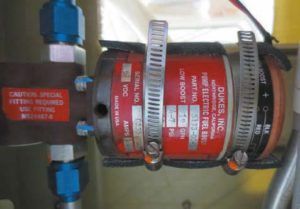
When It’s Time
So the improbable has happened—your engine-driven fuel pump has a slow leak. You’ve had your A & P look at it and she’s told you in no uncertain terms not to fly the airplane. What are your options to get back into the air?
You can buy a new pump, buy an overhauled pump or send the broken one out for overhaul. For engine-driven fuel pumps, the price differential between new, overhaul-exchange and overhaul is often low, sometimes only a few hundred dollars. Your choices for a new pump will be limited to the manufacturer of the pump installed by the manufacturer of the airplane and approved as original equipment or another pump manufacturer that has received a PMA or STC for its pump on your type airplane. That means a little homework on your part and price shopping.
There are several specialized shops approved to overhaul fuel pumps and suppliers such as Aircraft Spruce that sell new and overhaul exchange pumps. Most manufacturers, suppliers and overhaulers will get a new or overhaul exchange pump to you overnight—plan on returning your pump for core credit.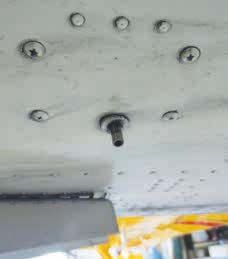
For boost pumps, the choice between overhaul and new is easy—there’s a big price delta, so plan on buying an overhaul exchange unit if you’re in a hurry or having your pump overhauled if you’re not. Again, do a little price and manufacturer shopping as there may be more than one pump approved for your airplane and the price for overhauled units may vary significantly between types of pumps.
Trying to keep track of how many companies manufacture fuel pumps isn’t easy. The rule of thumb is that the company that made the fuel pumps in your airplane will either still be in existence in some form (it may have a new name through merger or acquisition) or there is an overhaul shop that has approval to overhaul it.
If you want the lowest price and it’s okay for your airplane to be parked for about a week or so, you can send your pump out for overhaul by one of the specialized shops. Mark Mercer said that his company, Quality Aircraft Accessories, turns pumps in three to five business days. A & Ps we spoke with said that turn-around time was consistent with their experience.
According to overhaulers and mechanics, an overhauled pump is essentially as good as new because all parts subject to wear are replaced. Following overhaul, each pump is flow tested and set to meet the manufacturer’s flow specs. Nevertheless, the flow will have to be fine tuned to match the particular fuel system quirks and condition once the pump is on the airplane.
Conclusion
Both engine-driven and electric fuel pumps have a good record for reliability and need no preventive maintenance other than to keep debris out of the fuel system. If you are going to ignore the manufacturer’s recommendation on replacement/overhaul interval, then pay attention to warning signs that a pump is wearing out. If it’s leaking, don’t fly the airplane.

